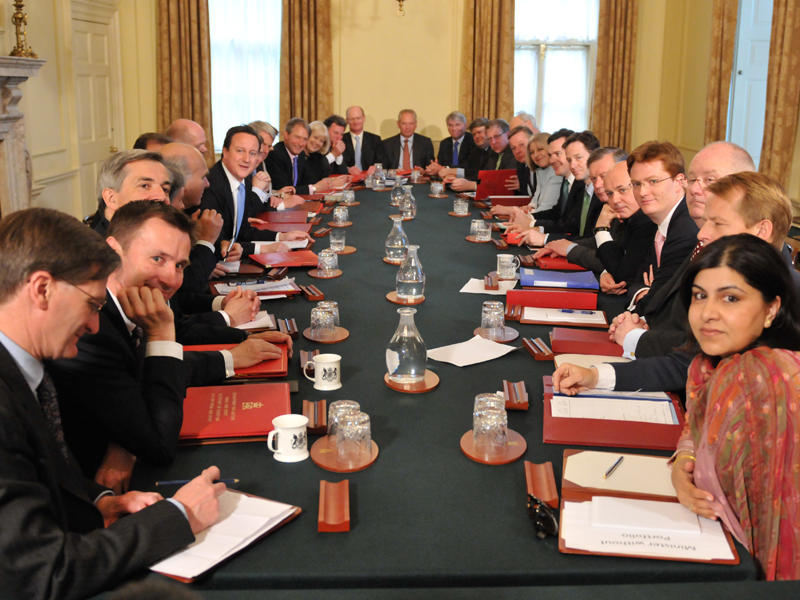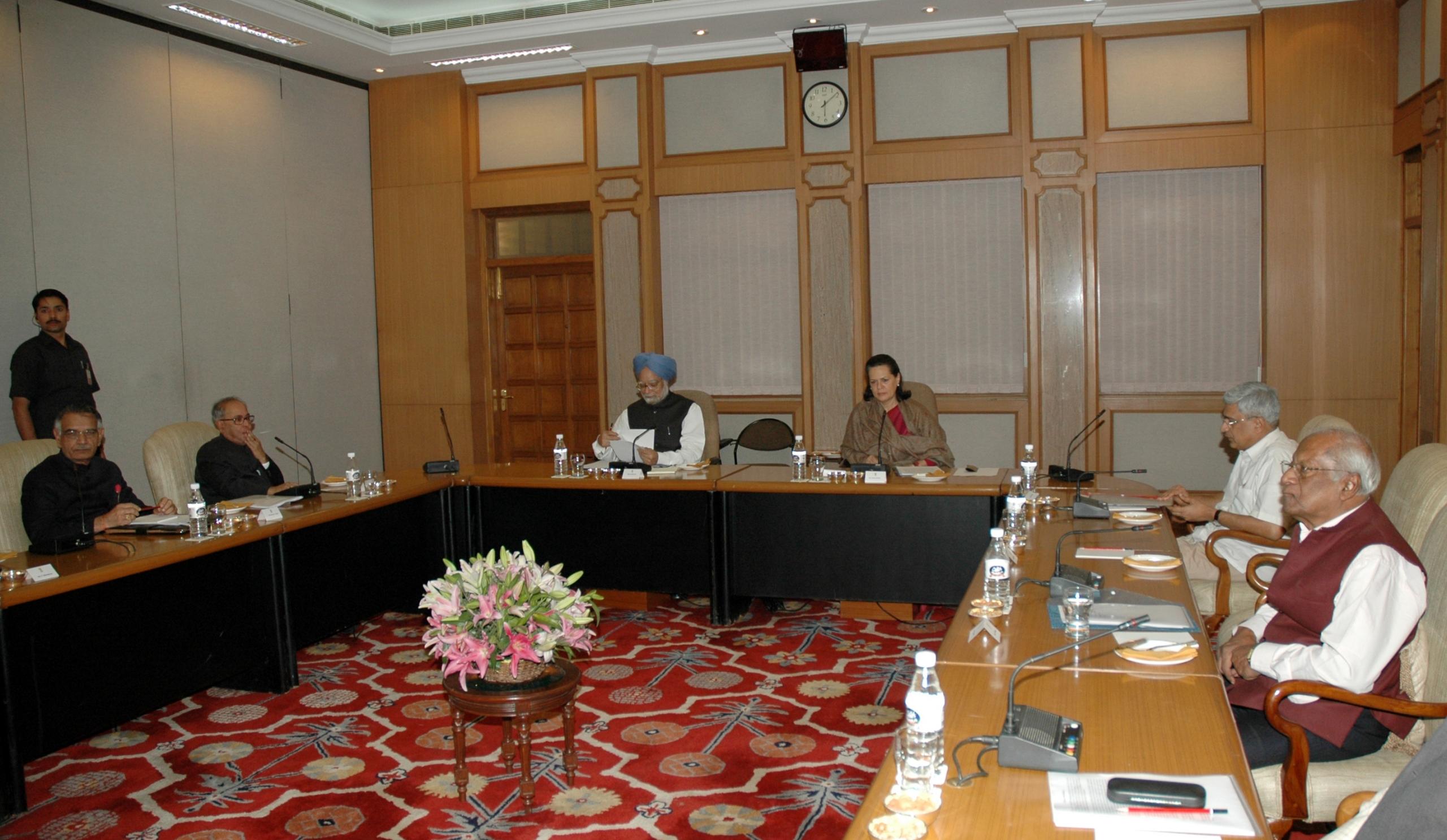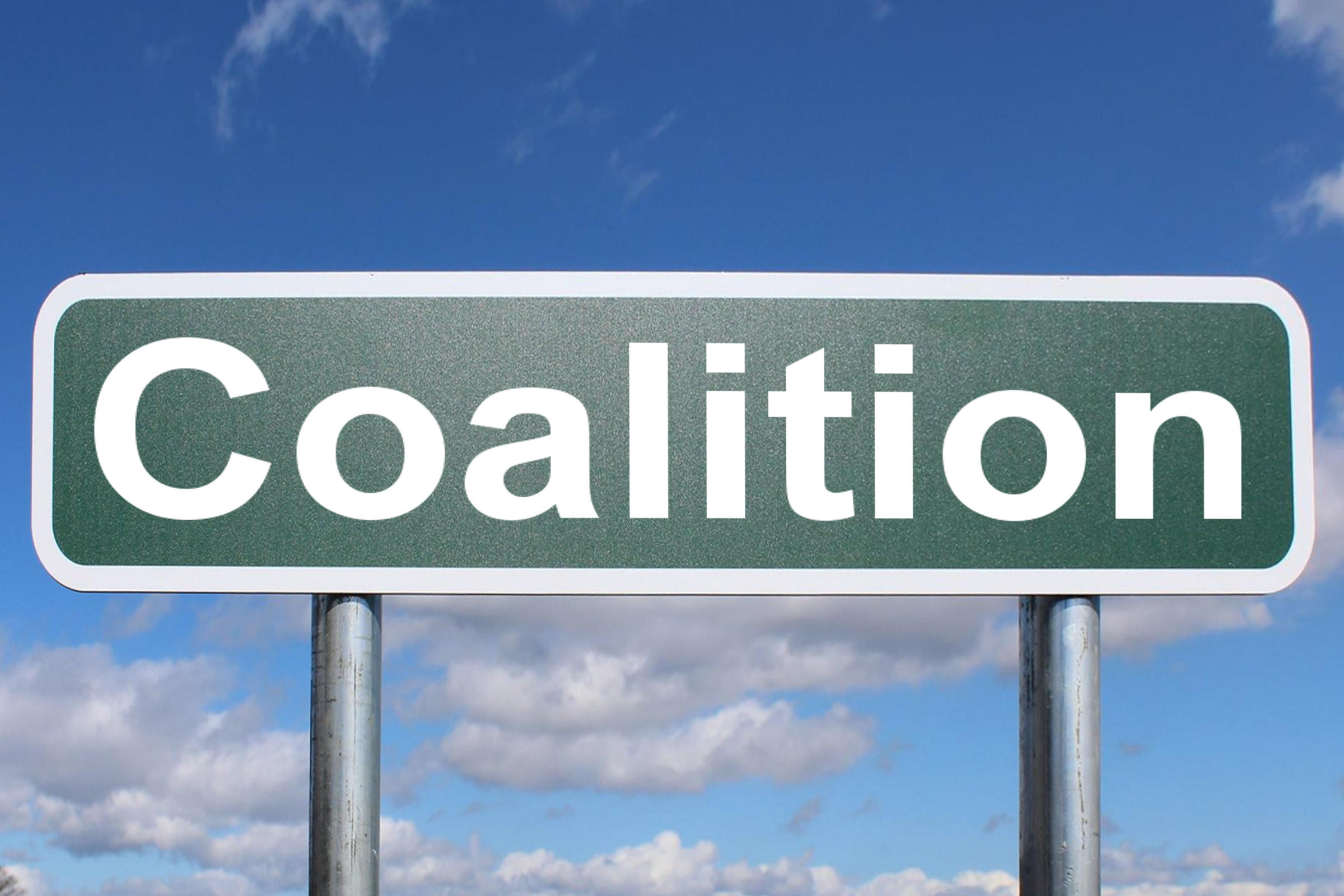When various political parties in a legislative government decide to work together in administrative and regulatory tasks, they form a body of advisors known as a coalition government. When no single political party can secure a majority in a general election, the other parties often try to negotiate a temporary alliance known as a coalition government. This kind of thing is likely to happen in times of crisis, like a war, or when political systems fail. A cabinet is formed by appointing members from each of the coalition government's political parties.

What Do You Mean by Coalition Government?
Did you know?
The word 'coalition' comes from the Latin term 'coalitio' which signifies 'to grow together'. Therefore, in essence, coalition refers to the process of bringing together separate parts into a single entity. In a political context, coalition denotes a partnership or alliance between different political parties.
Typically, a coalition government is established when no single political party achieves a parliamentary or legislative majority following an election. Coalition governments are more prevalent in countries with proportional representation systems, where voters select political parties rather than specific candidates, as opposed to majoritarian electoral systems, where an outright majority of votes are required for election. Until a fresh general election gives one party a majority in the legislature, coalition governments in countries with proportional representation systems, such as the UK, can stay in power.

While joining a coalition government does lessen the influence of any one political party, parties nevertheless want to be in charge when they do so. A political party would prefer a small amount of power over none at all, even if it means compromising on some policies. In nations where authoritarian regimes have traditionally held sway, coalition-based systems promote decentralization of decision-making and influence.
In times of national crisis, like a war or economic downturn, coalition governments can be formed in countries with different voting systems. In such cases, coalition administrations are usually created for a shorter period to enhance the government's perceived stability, unity, or political legitimacy. Similar to how single-party administrations can help decrease severe internal political instability, coalition governments can do the same. As an example, during both world wars, the UK was governed by multi-party coalitions. When no single political party could muster a majority, minority administrations were the norm, with members of the minority party pledging to support bills that were considered essential to the government's day-to-day operations.
The legislative branch, usually parliament, elects and oversees the executive branch in parliamentary democracies. To take office and stay in office, the government requires the backing of the majority of lawmakers. Coalition governments are formed through negotiations between parties when no single party has a majority in the legislature. Coalition governments, according to the bulk of the literature, should consist of no more than the number of parties required to obtain a majority vote in the legislature to function efficiently.
Coalition governments that want to stay in power need to make sure that all of their member parties benefit from it. Acknowledgment and tolerance for one another are essential. Both sides need to show they can see things from the other's perspective, even when they disagree. Compromise must be an option for all sides. Last but not least, a spirit of cooperation is required, regardless of the relative sizes of the constituent parties. Having an equal say in decision-making and the distribution of benefits and resources does not imply that all roles and duties are filled by the same people in a coalition; rather, it means that each group is valued for what it contributes to the table.
Coalition Governments in India
| Time Period | Name Of Coalition | Prime Minister |
|---|---|---|
| 1977-1979 | Janata Party | Morarji Desai (Congress (O)) |
| 1979-1980 | Janta Party (Secular) | Charan Singh (Janata (S)) |
| 1989-1990 | National Front | V.P Singh (Janata Dal) |
| 1990-1991 | Janata Dal (Socialist) or Samajwadi Janata Party | Chandra Shekar (Janata Dal (S) or Samajwadi Party) |
| 1996-1997 | United Front | H..D Deve Gowda (Janata Dal) |
| 1997-1998 | United Front | I.K Gujral (Janata Dal) |
| 1997-1998 | BJP-led Coalition | A.B. Vajpayee (BJP) |
| 1999-2004 | National Democratic Alliance (NDA) | A.B. Vajpayee (BJP) |
| 2004-2009 | United Progressive Alliance (UPA) | Manmohan Singh (Congress) |
| 2009-2014 | United Progressive Alliance – II (UPA-II) | Manmohan Singh (Congress) |
| 2014-2019 | National Democratic Alliance (NDA) | Narendra Modi (BJP) |
| 2019-present | National Democratic Alliance (NDA) | Narendra Modi (BJP) |
Benefits and Drawbacks of a Political Coalition
In popular perception, a coalition government is inherently unstable. For a coalition government to be formed, it is necessary to strike a balance between the leading political groups. Coalition government leaders should take these groups' concerns seriously. The divergent views of the political parties and the constant threat of government dissolution make it harder to reach a consensus on important issues. Coalition governments have their benefits and drawbacks, as history has demonstrated.
Benefits
Coalition governments encourage more consensus-based politics since members of the government from diverse ideological backgrounds must work together to reach policy compromises. A wider range of perspectives is reflected as a result. Those who identify with or participate in the minor parties in two-party systems frequently feel that their opinions are unheard. Nevertheless, this can be addressed through coalition governments. Coalition governments are more democratic and equitable because they include a larger variety of people and perspectives.
Coalition governments are compelled to place a greater emphasis on compromise, negotiation, and building a cross-party consensus. The foundation of a coalition is an agreement reached between political parties after an election in which the parties commit to working together to create a legislative program. They make it easier to resolve conflicts in this way. Coalition administrations tend to reflect a more diverse range of opinions, which lessens the likelihood of antagonistic politics emerging, and they are also able to maintain administrative continuity more easily.

Drawbacks
Coalition governments aren't always as democratic as they should be because smaller parties can negotiate for greater support than they've received in the ballot box. A politically weak party can exert its will on the majority when it is given access to positions of power it did not earn via elections. Attempts by smaller parties to play "kingmaker" and obtain more influence in elections, especially those that are close, may be more common than their actual vote total would indicate.
Another problem with coalition administrations is that the campaign pledges and party platforms are usually just to garner votes; once the government is formed, they become mostly useless and unachievable. Many party pledges made in the campaign are often reneged upon during the post-election coalition-building negotiations. Because they know they won't be re-elected in the same shape, coalitions tend to focus on the near term. Because of these drawbacks, people may become less invested in the electoral process and even less likely to cast a ballot.
Coalition administrations have the potential to be unstable and fail to accomplish much due to the inherent ideological disagreements among political allies. Governments formed by coalitions run the risk of becoming dysfunctional as individual parties try to "please everyone," whether that's their coalition partners or the public. The inability to make tough but essential decisions is a result of coalition governments' "the lowest common denominator always wins" policy. Coalition administrations are vulnerable to dissolution in the current climate of compromise-driven anarchy. For instance, since 1945, Italy has seen more than 60 coalition governments, each with its history of instability.
Coalition Government in India
India has a quasi-federal constitution and parliamentary governance. Indian society's heterogeneity and complexity spawned many national, regional, and local political parties. Political groups with similar ideologies have formed for over 50 years since independence. Since 1989, coalitions and minority governments in New Delhi have been crucial to political federalization and economic liberalization in India in the 1990s. Congress ruled the Centre until 1989 when coalition and minority governments emerged. This year, too, India will witness two political coalitions vying for power in the upcoming general elections of 2024.
The NDA (National Democratic Alliance)
In India, the Bharatiya Janata Party (BJP), which is pro-Hindu, heads the National Democratic Alliance (NDA), an alliance of conservative political groups. During the tenures of Prime Ministers Atal Bihari Vajpayee (1999–2004) and Narendra Modi (2014–present), the National Democratic Alliance (NDA) was in charge. The National Democratic Alliance (NDA) was created in 1998 to prevent the Indian National Congress (Congress) Party from assuming power, despite certain ideological disagreements among its constituent parties.
Although it had difficulty acquiring and retaining power in the 1990s, the BJP was able to bring together over twenty national and regional parties to form the NDA alliance. The NDA ran for parliament in 1999 from that vantage point. The BJP won 182 out of the 294 seats in the coalition, giving them a majority to govern. Since the BJP was the largest alliance party, its members held important positions such as prime minister (Vajpayee, who was also the NDA chair) after the NDA gained a legislative majority.

The UPA (United Progressive Alliance)
One of India's political coalitions, the United Progressive Alliance (UPA) counts the Indian National Congress (Congress Party) among its most prominent members. As Prime Minister Manmohan Singh's coalition partner from 2004–2014, it was pivotal. When the 2004 Lok Sabha elections produced an undecided result, the Congress Party and several smaller parties presented a unified agenda—the National Common Minimum Programme [NCMP]—in the hopes of garnering enough support to establish a coalition, ultimately leading to the formation of the center-left alliance. The alliance did not win over the majority of Lok Sabha members, but it did garner backing from other left-leaning parties that were working together to depose the Bharatiya Janata Party's (BJP) right-wing National Democratic Alliance (NDA).
Voters' increased political awareness and discernment are reflected in the rise of political coalitions, which are necessary for power-sharing and political accommodation. Coalitions should not be viewed as a means to political instability but as a manifestation of voters' discontent with one party's dominance, which in turn inspires dissent, demonstrations, and radicalism. When voters reject unitarian forces and dogmatic stances in favor of power-sharing and political accommodation, it shows that they have matured as voters. These conditions are satisfied when a coalition government is formed, which consists of two or more political parties working together to form the government.











